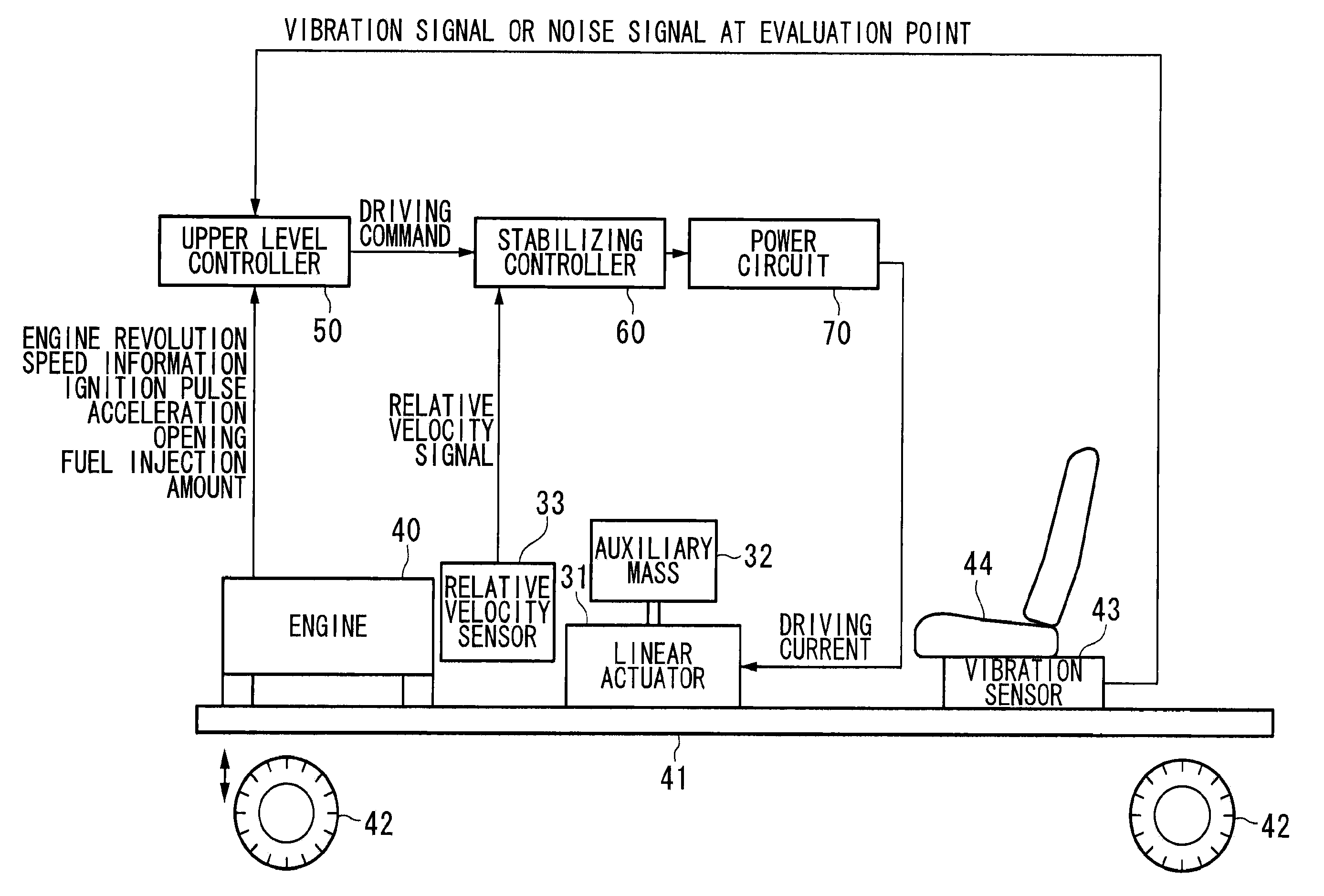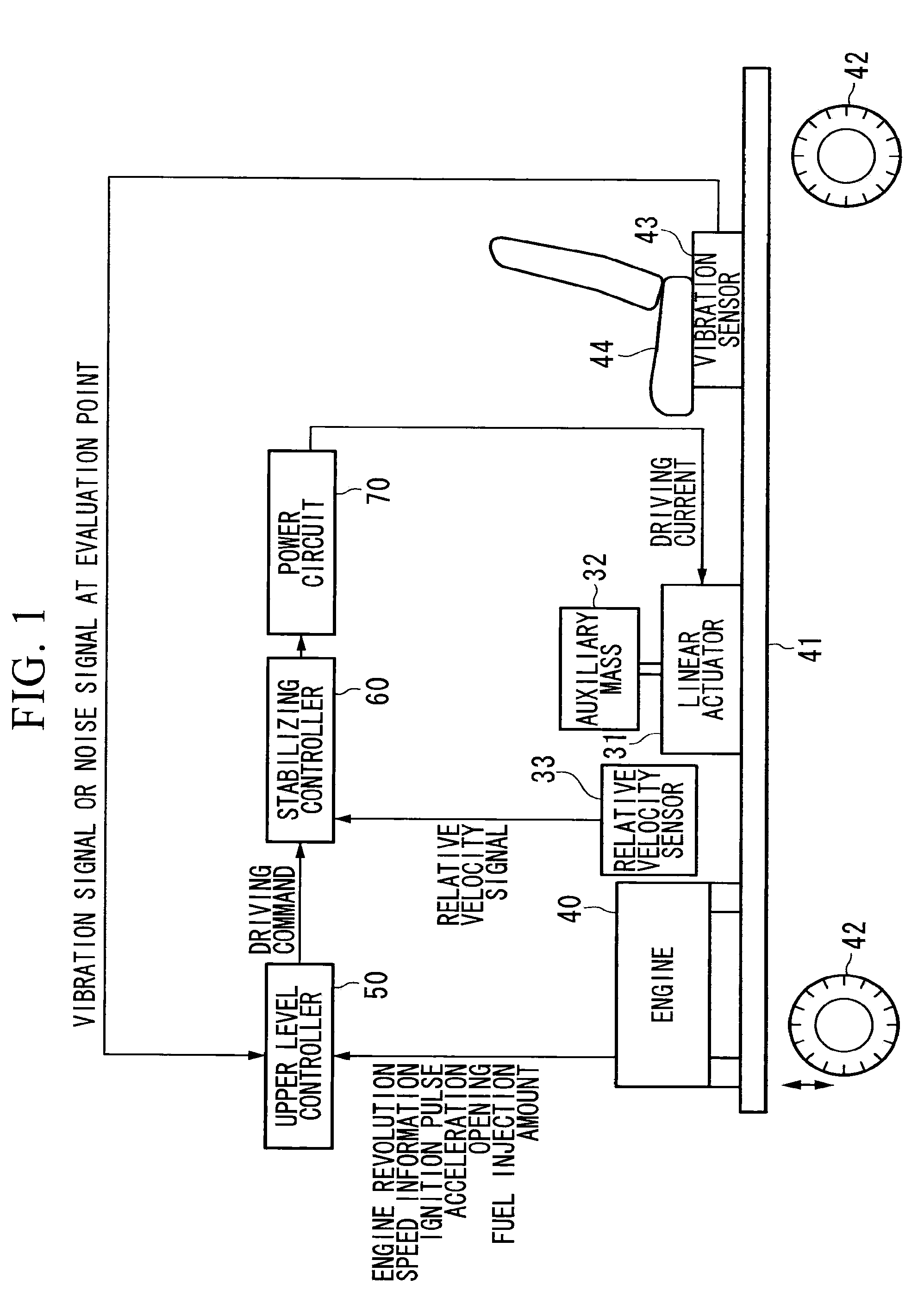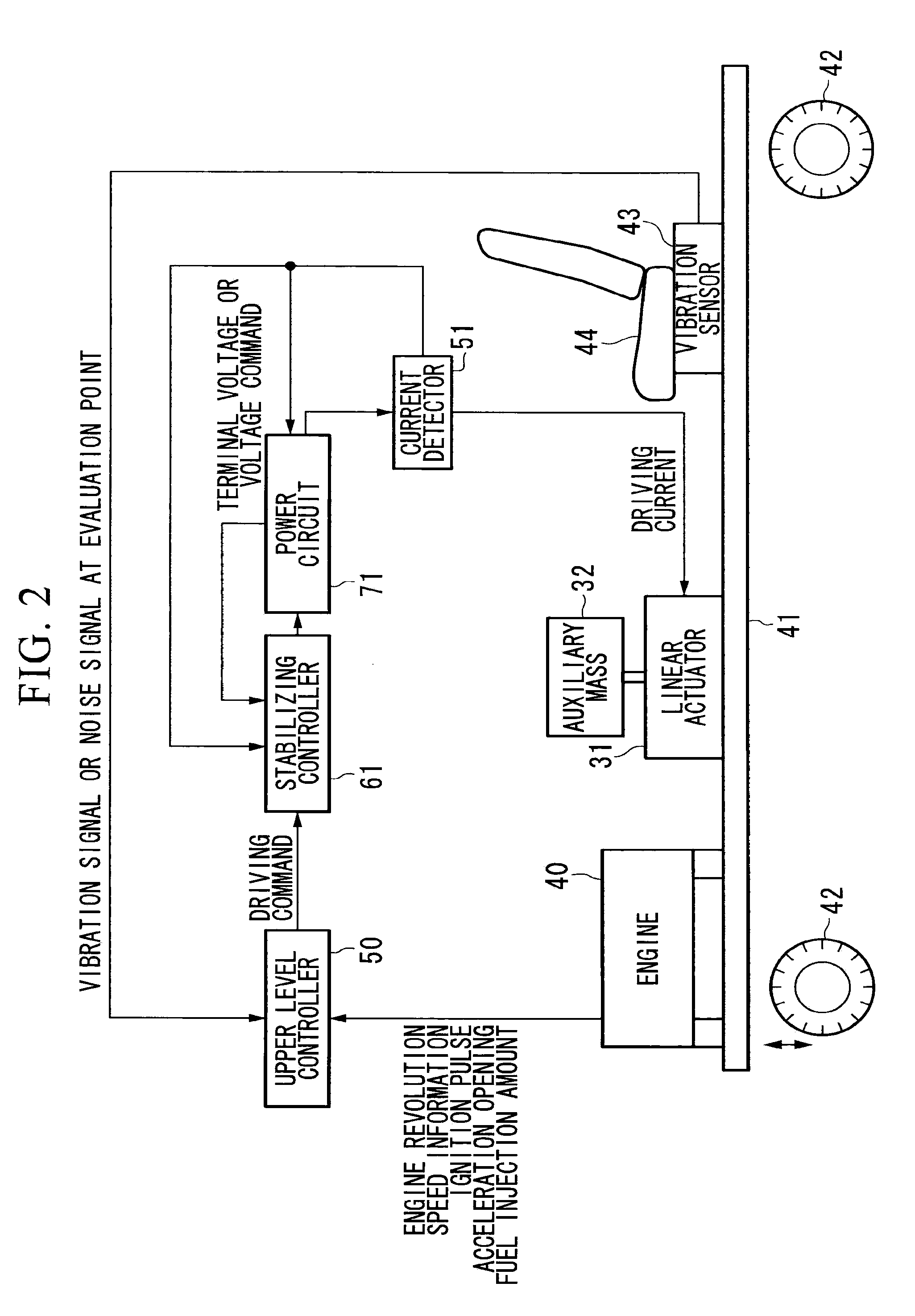Damping apparatus for reducing vibration of automobile body
a technology of damping apparatus and automobile body, which is applied in the direction of computer control, temperatue control, special data processing applications, etc., can solve the problems of engine vibrations increasing, the response of the actuator to command signals changing significantly, and the lack of reliability, so as to reduce the apparent natural frequency of the actuator, increase the damping characteristic, and stabilize the damping control
- Summary
- Abstract
- Description
- Claims
- Application Information
AI Technical Summary
Benefits of technology
Problems solved by technology
Method used
Image
Examples
first embodiment
[0058]FIG. 1 is a block diagram showing a configuration of a damping apparatus according to a first embodiment of the present invention. In the present embodiment, a case is described where the damping apparatus is applied to an automobile as an example. In FIG. 1, reference symbol 31 denotes a linear actuator that reciprocates an auxiliary mass 32. The auxiliary mass 32 reciprocates in a direction the same as that of vibrations to be suppressed. Reference symbol 33 denotes a relative velocity sensor that detects a relative velocity between the linear actuator 31 and the auxiliary mass 32. Reference symbol 40 denotes an engine of an automobile that is fixed on an automobile body frame 41. Reference symbol 42 denotes wheels of the automobile. Reference symbol 43 denotes a vibration sensor (acceleration sensor) provided in a predetermined position of a passenger seat 44 or the automobile body frame 41. Reference symbol 50 denotes an upper level controller that receives input of engine...
second embodiment
[0076]Next, a configuration of a damping apparatus according to a second embodiment of the present invention is described. FIG. 3 is a block diagram showing a configuration of the damping apparatus according to the second embodiment. In FIG. 3, the damping apparatus is connected to an automobile body frame (main system mass) 41 serving as a control object, and controls (damps) vibrations in the vertical direction (gravitational direction) that occur in the body frame (main system mass) 41.
[0077]The damping apparatus in the present embodiment is a so-called active dynamic vibration absorber, and includes a current detector 63 that detects driving current to a linear actuator 31, a terminal voltage detector 64 that detects terminal voltage of the linear actuator 31, and the linear actuator 31 that drives based on detection results of the current detector 63 and the terminal voltage detector 64. The damping apparatus uses the driving force of the linear actuator 31 to drive the auxilia...
third embodiment
[0092]Next, a configuration of a damping apparatus according to a third embodiment of the present invention is described, with reference to the drawing. FIG. 10 is a block diagram showing a configuration of the same embodiment. Here, the present embodiment is described on the assumption that an engine that performs cylinder number control is an excitation source in an automobile. In this diagram, reference symbol 41 denotes an automobile body frame. Reference symbol 40 denotes an engine capable of performing cylinder number control according to the operation state thereof, and this engine 40 is a vibration generating source (excitation source). Reference symbol 44 denotes a seat of a driver's seat (hereunder, simply referred to as seat), and this seat 44 is a point at which vibrations are measured. Reference symbol 43 denotes an acceleration sensor attached to the seat 44, and this detects the acceleration of the seat 44. Reference symbol 31 denotes a linear actuator (reciprocating ...
PUM
 Login to View More
Login to View More Abstract
Description
Claims
Application Information
 Login to View More
Login to View More - R&D
- Intellectual Property
- Life Sciences
- Materials
- Tech Scout
- Unparalleled Data Quality
- Higher Quality Content
- 60% Fewer Hallucinations
Browse by: Latest US Patents, China's latest patents, Technical Efficacy Thesaurus, Application Domain, Technology Topic, Popular Technical Reports.
© 2025 PatSnap. All rights reserved.Legal|Privacy policy|Modern Slavery Act Transparency Statement|Sitemap|About US| Contact US: help@patsnap.com



